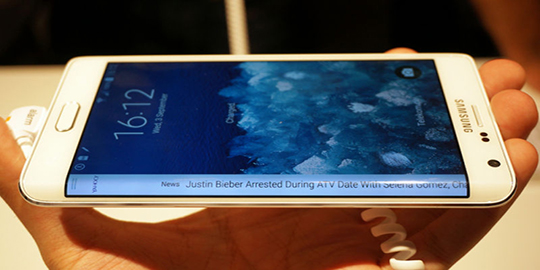
Technology Observatory September 1–7
This week's Technology Observatory brings you the following stories:
● Google announces September 15 event in India. Android One?
● Microsoft increases file limit for OneDrive
● Apple confirms that iCloud was not hacked in recent leaks of celebrity photos
● Meizu MX4 ready and looking good: 5.36" display and eight cores for 225 euros
● Summary of IFA 2014
● Apple to broadcast video of September 9 iPhone event

At some point during this month that has just begun, the first Android One mobiles are expected to appear in India, and the day of the great unveiling could be in two weeks. Google has started sending out invitations to an event that will take place in India on September 15, and although they haven't given any more details, the date and place chosen suggest that the first Android One phones will be launched. Sundar Pichai is expected to put in an appearance at the event. The Android One project is Google's attempt to introduce entry-level smartphones for less than 100 dollars in emerging markets, offering good user experience, no slow servers and no poor technical support. Google will offer the stock Android version in these devices and automatic updates. The first Android One devices will be made exclusively for India, by Karbonn, Micromax & Spice. It's not certain whether the project will reach other countries.
With fierce competition among the leading services specializing in cloud storage for files, Microsoft has once again taken matters into its own hands by increasing the file upload limit from 2 GB to an as yet unknown size. The move was first discovered by a Reddit user with the nickname megaman821 and confirmed by other responses received in the same thread, according to a report in TNW, which on contacting the company received the following response: "As we mentioned in our uservoice, we have started the work to increase the file size limit for all OneDrive accounts. We have started the process with a small number of customers and will continue to roll it out to our full customer base." A Microsoft spokesperson also said that they would be sharing more information in the near future on the OneDrive blog. In view of the confusion created by Omar Shahine, Group Program Manager at Microsoft, in a uservoice thread indicating that it was simply an old limitation that they had been working on removing for a long time, giving rise to speculation that any file size would be accepted in the future, the Microsoft spokesperson was asked whether "remove" really meant "increase", but said the company had nothing else to share. It certainly looks like Microsoft is trying to match or better rival services in terms of the functionalities and features it offers via OneDrive.
Apple has issued an official statement about the most controversial case on the Internet in recent days, namely leaked photos of celebrity females either in the nude or intimate situations, which according to early declarations had mostly been obtained from iCloud accounts and other cloud storage services used by the victims' smartphones. After investigating the case for 48 hours, Apple said it was able to confirm that the victims' accounts were hacked directly, and that it had nothing to do with any iCloud vulnerability. This means that the leaked photos of Jennifer Lawrence, Kate Upton, Kirsten Dunst, Ariana Grande and scores of other celebrities were simply due to direct attacks on their iCloud accounts (and accounts with other services as not all of them use iPhone), which the hackers were able to access due to weak or insecure passwords. One of the most serious mistakes you can make is to have an insecure password for your accounts on online services. It is virtually impossible for a hacker or software to guess a password that contains at least 10 characters and includes upper and lower case characters, symbols and numbers, which is why IT security experts recommend them. What Apple should certainly do as regards iCloud – and the same goes for Dropbox, Drive, OneDrive and any other cloud service – is impose restrictions or limitations on the number of failed login attempts. Beyond that, however, the recent leakage that led to celebrities' accounts being hacked and the publication of hundreds of intimate photos on different websites was not due to any kind of iCloud security breach.
The Meizu MX3 is an interesting smartphone but there's no denying that the Chinese firm has really pulled out all the stops with the new MX4, which has just been officially unveiled. For one thing, the hardware is greatly improved, and although the design basically repeats that of its predecessor, the nuts and bolts are sturdier, mainly because of the metal chassis. The display has grown slightly if you compare it with the MX3 (5.36 inches in the new terminal), while its IPS panel has a resolution of 1152 x 1920 points and a Gorilla Glass 3 protective cover. Like its predecessor, it boasts an octa-core SoC, although this time the Samsung Exynos 5 Octa has been replaced by a MediaTek MT6595 with a quad-core 2.2 GHz Cortex-A17 and a quad-core 1.9 GHz Cortex-A7. Meanwhile, the GPU is a PowerVR G6200 with four cores, and it has 3 gigabytes of LPDDR3 as its main memory. Another much-improved component is the rear camera, which in the MX4 has a Sony20.7 MP Exmor RS sensor, with a dual-tone LED flash, and can shoot 4K video at 30 FPS. The front-facing camera uses a 2 MP sensor, also made by Sony, and can shoot Full HD video. The connectivity is also more complete than in the MX3. In fact, the MX4 comes with LTE Cat. 4, 3G HSPA, 4.0 Bluetooth and dual-band WiFi. Last but not least, it has a 3,100 mAh battery and will be available in three versions: 16, 32 and 64 gigabytes. Meizu has confirmed that the MX4 can be reserved in China as from today, retailing at 1,799 yuan (225 euros) for the 16GB model, 1,999 yuan (250 euros) for the 32GB model, and 2,399 yuan (300 euros) for 64GB. The bad news is that they haven't yet revealed whether it will be available outside China.
Year after year, Berlin plays hosts to one of the leading technology events and the most important consumer electronics trade fair in the whole of Europe, the IFA. The latest edition, IFA 2014, has just got off to a very earnest and powerful start with multiple launches and some of the most anticipated devices of the year, especially from Samsung and Sony, the key players on the first day of the show.
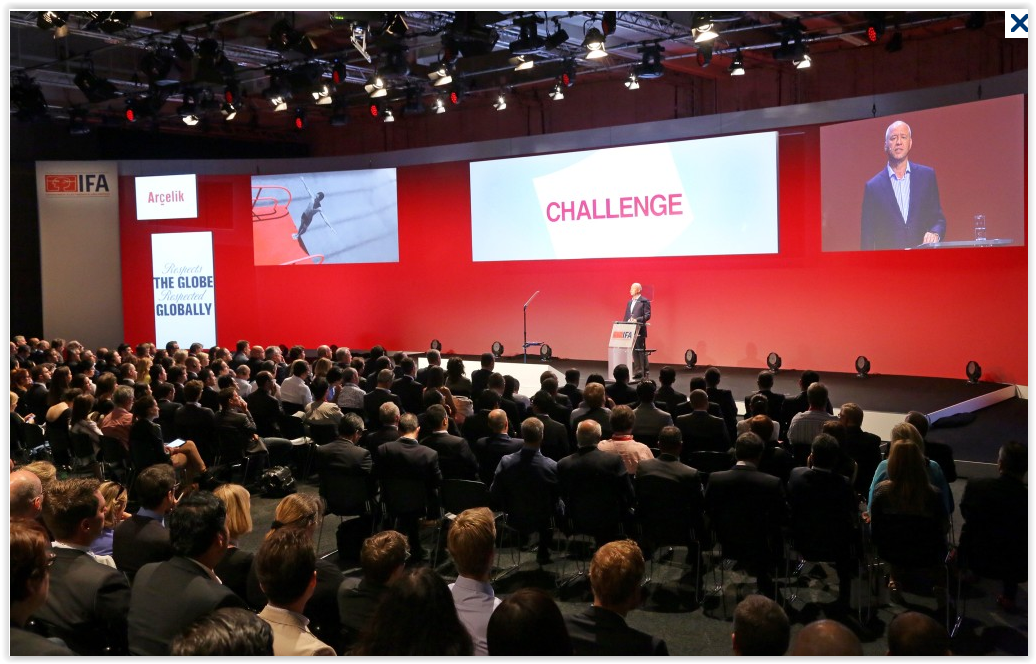
Day One of IFA 2014 was full of breathtaking cells, tablets and numerous wearables, a device that is gradually carving out an ever-larger market presence. In fact, many of us predict that by December of this year, all the leading mobile device brands – including the one not present at IFA – will have brought out their own wearable.
Smartphones
Samsung and Sony were the highlights of the day, and they each unveiled new smartphones that are sure to be very popular this Christmas. The Korean firm officially revealed its new star "Phablet", the Samsung Galaxy Note 4, and another new member of the Note family as well. In addition to the long-awaited Galaxy Note 4, Samsung also presented its latest proposal for cell phone users, the Galaxy Note Edge. What makes this terminal so unique is that it not only has an enormous display, catering to all those tablet-smartphone hybrid enthusiasts out there, but one of its edges is curved, which Samsung says creates an extra space for notifications and a few apps, meaning that users don't have to interrupt what they're doing on the "main" side of the display. A good idea, but the result is somewhat bizarre.
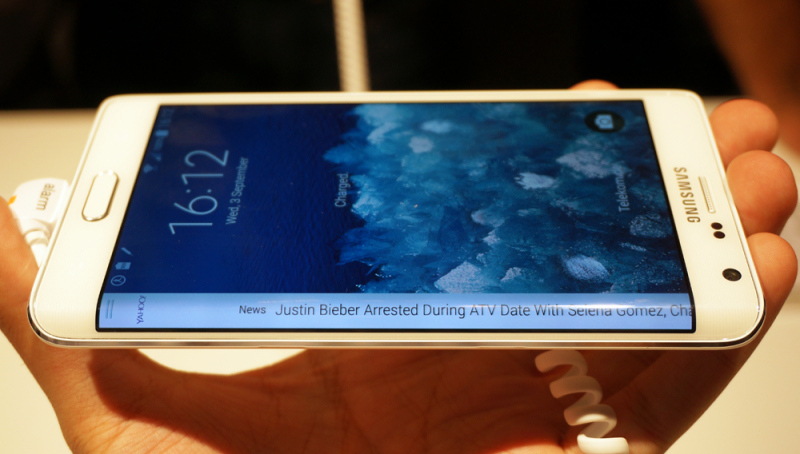
Sony also unveiled two new smartphones for the high end of its terminal range. The new Sony Xperia Z3 has a more appealing design than the previous version in that it's more polished, sleeker and just looks better. It's kept its predecessor's water resistance and finest features but now comes with an excellent camera as well. As for the Sony Xperia Z3 Compact, this is a mini version of its big brother, with practically all the same technical specifications but in a smaller space, no doubt aimed at all those who think 5.2 inches for a display is taking things a little too far. Sony also announced that users will be able to play their PlayStation 4 video games on the new Xperia models thanks to the same remote play function found in the PS Vita. A great addition for gamers who acquire the terminal.
Wearables
Wearable devices were another highlight of the first day at IFA 2014, and since every brand seems to want its own, no doubt they will remain in the spotlight for the rest of the fair.
Samsung not only unveiled the Galaxy Note smartphones mentioned above, but another wearable to add to its existing portfolio, namely the Samsung Gear S. Although still not supported by Android Wear, it does have some very promising features, such as the fact that it has its own SIM card for accessing mobile data and therefore isn't dependent on a smartphone.
A new smartwatch was also one of the wearables that Sony presented. By updating its portfolio with the Smartwatch 3, this time the device comes with the Android Wear operating system and has a much-improved design, opting for a more minimalist, youthful look. Sony also unveiled its first smartband for sports enthusiasts, the Smartband Talk, which has a small E Ink screen that displays all the information you could possibly want, from your heart rate to the number of steps taken.
Lastly, after leaking a few clues in recent days, ASUS finally unveiled its smartwatch. The ASUS ZenWatch has an Android Wear operating system, which means that the apps available for this watch are the same as those available for any other model, although it does have some excellent technical specifications – not least, a truly stunning design.
Tablets and more
As if two smartphones and two wearables weren't enough, Sony also unveiled a tablet at this edition of IFA. Despite its overly long name, the Xperia Z3 Tablet Compact is a very practical device, is easy to carry around, imitates the same design as the new Xperias, comes with an 8-inch display, is water resistant, and seems determined to compete with the iPad mini Retina. As for laptops, the Lenovo Y70 Touch and the ASUS UX305 Zenbook are the most powerful models and took the first day of the IFA by storm. Full of potential in terms of hardware (even for gaming), their incredible screens clearly place them up in the high-end range of laptops for the most demanding users.
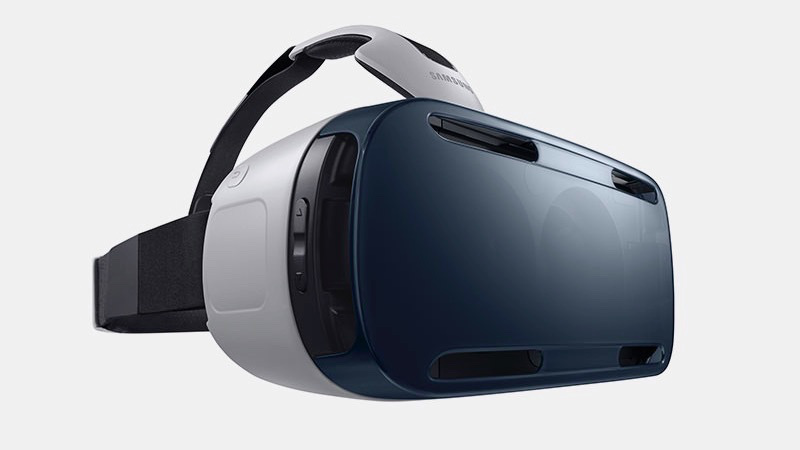
But undoubtedly, and although it had already been leaked on several occasions, one of the most attractive and interesting devices presented on day one was the Samsung Gear VR virtual reality headset, which the Korean company has designed to work with the Galaxy Note 4, turning the terminal into a virtual reality screen for games and numerous other applications. Interesting as it is to see Samsung taking a gamble on virtual reality, what makes it truly extraordinary is that it has done so courtesy of Oculus VR, makers of the Oculus Rift headset, so we even saw the great John Carmack take to the stage to announce the Gear VR. Sony, Samsung and now Oculus therefore look set to become the three virtual reality giants in the coming years.
TV sets
After unveiling its latest mobile devices yesterday afternoon, Samsung decided to show us its new offerings in the home appliances division, with a particular focus on its TV sets. With fairly large sets ranging from 48 to 105 inches, the Korean brand is clearly bent on maintaining its leading position in the market. This year they seemed keener than ever to show us what they're capable of and brought two TV sets that are certain to cause a stir. The first one has a 105-inch display with a 21:9 aspect, which means a resolution of 11 million pixels (5120x2160) or, to put it another way, five times Full HD resolution. It also features a 106W loudspeaker to make sure you can pick up every single sound in the movie you're watching. Moreover, it can adapt any content to UHD resolution, making it ideal for markets where content of this quality is still in its infancy. Even more striking, and perhaps likely to cause an even greater stir, was the other TV set unveiled by Samsung, again with a 105-inch display but also featuring Bendable UHD technology. This means that viewers can choose between watching a totally flat or curved display simply by pressing a button, thus enhancing their viewing experience. The display can curve up to 4200R when this function is activated. Finally, UHD Dimming and UHD Upscaling ensure picture optimization and reduced light diffusion.
Day Two at IFA was just as replete with activities, presentations and novelties in the field of technology as the first day of this Berlin fair. Following an intense opening day, the second day turned the spotlight on Nokia and Huawei , but there were other novelties as well. Here's the best of Day Two.
Smartphones
Nokia and Huawei gave official presentations of their offerings in this field. Nokia unveiled its Lumia 830, a medium-to-high end device that places the emphasis on the camera. In the medium range, it presented the Lumia 730 and Lumia 735, both with a 5 pixel front-facing camera for the ultimate selfie and optimization for Skype calls. In the same vein, its new Lumia Selfie app offers special filters and a timer for taking these snaps.
Huawei unveiled the Huawei Ascend Mate 7 which belongs to the latest generation of its phablet family and sets a strong precedent for competing with the Note devices. The highlight specifications are the 6-inch display in Full HD, powerful battery and a fingerprint sensor on the back.
To everyone's surprise, the Asian manufacturer Huawei also unveiled the Ascend G7, a high-end mobile device, although there are mid-range versions as well, which will reach stores in October.
Meanwhile, HTC presented the Desire 820, a mid-range device that sets a new standard for this segment of the market. With colors targeted at younger consumers, it nevertheless offers very respectable features, including a 64-bit Snapdragon 615 processor that will be compatible with Android L.
G Watch R
LG also presented its second wearable, the G Watch R, demonstrating that the Korean company is opting for a round design, minute attention to the details and standout features to please technology addicts.
New Moto X
Motorola is keen to establish a continuity with its two best-known terminals by placing "new" in front of the name of the (forgive the repetition) new Moto X. This smartphone comes with significantly improved specs in nearly every category and especially the display, now 1080p, so we have no hesitation in placing it in the 2014 best terminals league. As for the price, revealed below, it's still quite competitive but not groundbreaking.
Moto 360
The first to go for a round design, this set the trend for other manufacturers who had started out with straight lines. Even so, it still wasn't 100% convincing. That's all in the past now and the Moto 360, undoubtedly the most coveted smartwatch, will reach the market on October 1 for 249 euros. You can reserve it as from today at Amazon Spain in black or silver.
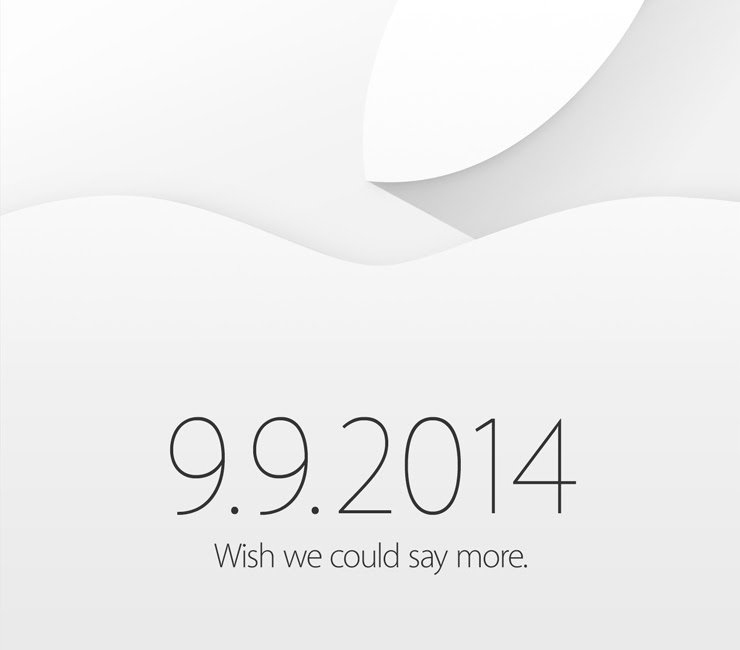
Tuesday September 9 is the date set for the presentation of Apple's next generation of smartphones, the new iPhone. Not only that ‒ we're also expecting the giant from Cupertino to unveil its first wearable, possibly a smartwatch with NFC technology, and plenty of other surprises. We'll be able to watch all of this as it unfolds on video, as Apple has announced it will live stream the event. Naturally, as on previous occasions when Apple has live streamed its keynotes, in order to watch the event on video you'll need an Apple TV or any device with a Safari browser, so if you have an iPad, iPhone, Mac or iPod Touch all you'll need to do is go to the event website and sit back and enjoy the presentation. Apple will be unveiling its new generation of iPhones at the Flint Center, the same place where Steve Jobs presented the first Macintosh 30 years ago, but this time they've built a huge mysterious structure which suggests that the upcoming event will be different from all the ones that have gone before. It promises surprises and major announcements, courtesy of Tim Cook and Co. Up to now, we've seen a few very detailed leaks about what seems certain to be the new iPhone, but we'll have to wait and see whether Apple's first wearable will be a smartband or a smartwatch. Whatever it turns out to be, come September 9 – the day chosen for what technology enthusiasts regard to be one of the highlights of the year – we'll be able to watch the live stream on the Apple website.
